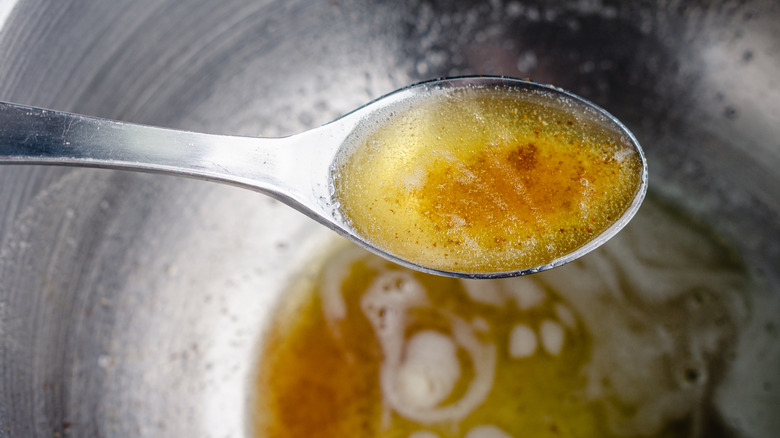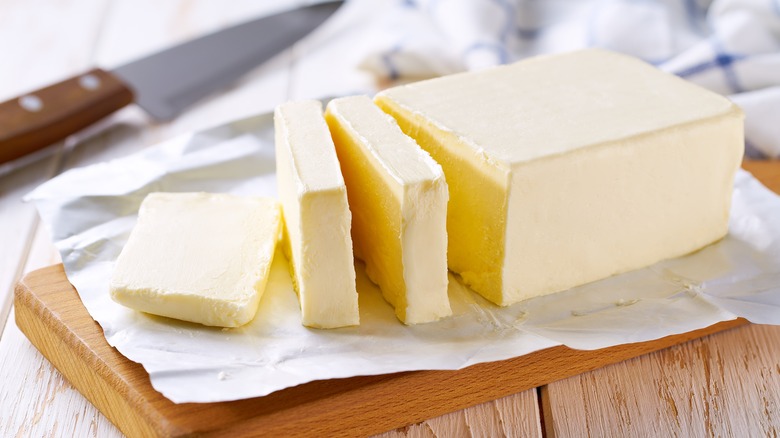The Major Mistake You're Probably Making When Browning Butter
Brown butter is one of the best magic tricks in cooking, and like any sleight of hand it requires some practice to avoid basic mistakes. All it takes is some short, sustained heat to turn ordinary butter into a special combo of sweet-savory flavors with a nutty depth, and it doesn't take much more to turn it into a bitter waste. There are plenty of mistakes to avoid with brown butter, like throwing off the taste with salted butter, but most are going to involve dealing with the heat. It's not enough to just turn down the temperature so you don't burn it either; there are some important prep steps that can mess up your brown butter before you even get to use it.
A big one that is often overlooked is cutting the butter up before it goes in the pan. Lots of us have been guilty of just dropping a whole block of cold butter into a pan for browning. After all, it's going to melt before you start to really cook it, so what's the problem? Well, brown butter actually cooks pretty fast, and anytime you are dealing with something that cooks quickly, getting an even heat becomes essential. If you're using a whole stick of butter, the outer parts that melt first will start to cook before some of the interior even starts to melt. Cutting your butter up into small uniformly-sized chunks ensures it all gets exposed to the same amount of heat.
Slice your butter before browning for even heat
Managing heat is really important because the toughest thing about brown butter is the timing. It can go from not at all ready to perfect to burnt in short order, even with mild cooking temperatures. Brown butter gets its unique flavor as water evaporates and the milk solids toast and separate from the fat, creating little brown flecks you see throughout the pan. They cook very quickly once they separate, and they also sink to the bottom of the pan which exposes them to higher heat.
If your butter isn't sliced into even pieces before you start, then some areas could heat for a minute or two more than the rest. For a preparation where 30 seconds or less could make the difference between success and failure, that isn't going to work. Melt prepped butter over low to medium-low heat to keep it from cooking too fast as it melts.
You should also be stirring with a rubber spatula to keep the butter as evenly exposed to heat as possible. Once it's all melted, you can turn up the heat a little and finish the process. When the butter starts to foam, don't take your eyes off it. The moment the solids start to brown and you smell their toasted scent, pour the brown butter into a bowl to ensure it doesn't burn.

